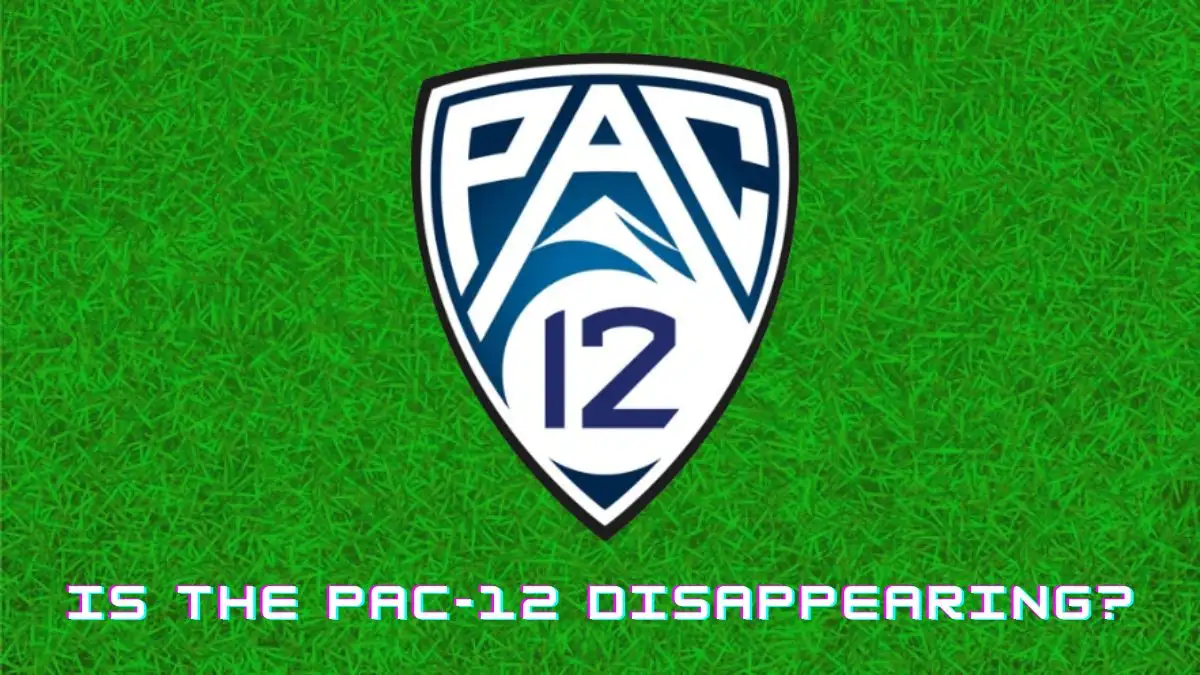Why is the Pac-12 Ending? What Happened to the Pac 12?
by Swetha P
Updated Dec 02, 2023

Is the Pac-12 Disappearing?
Yes, the Pac-12 as we know it is on the brink of disappearing. Once a powerhouse in college football, the conference is undergoing significant changes. Ten out of the twelve member schools are set to depart for other conferences by 2024. The conference will effectively dissolve, leaving only two schools—Oregon State and Washington State—to carry on as the Pac-12 in a reduced capacity.
The departure of prominent schools like Oregon, Washington, USC, UCLA, and others marks the end of an era for the Pac-12. The remaining two schools will face an uncertain future, playing with limited conference affiliation and potentially engaging in schedule mergers with other conferences for their games.
Why is the Pac-12 Ending?
The demise of the Pac-12 can be traced back to challenges in securing lucrative television deals, which are crucial for revenue and conference stability. While other major conferences managed to secure significant media rights contracts, the Pac-12 struggled to strike a similar deal. This impacted the conference's financial health and overall brand perception.
Additionally, the conference's performance in revenue-generating sports, notably football, faltered in recent years, leading to decreased national relevance. The inability to consistently compete at a high level on the football field, coupled with failed media negotiations, contributed to the conference's decline.
Discover the excitement of sports through the eyes of Fresherslive's well-crafted articles, giving you a ringside view of the action and ensuring you're always in the know.
What Happened to the Pac-12?
The Pac-12 faced a combination of challenges that ultimately led to its current state. The conference grappled with unsuccessful negotiations for media rights deals, lagging behind other major conferences in securing lucrative contracts. This, coupled with a decline in competitive performance in football, affected the conference's appeal and financial standing.
As a result, key schools within the Pac-12 chose to seek affiliations with other conferences, signaling the end of the Pac-12 as a dominant force in college sports. Most member schools are set to join other major conferences like the Big Ten, Big 12, and ACC, leaving only two schools to represent a much-reduced Pac-12.
Where will Pac-12 teams play next year?
In the upcoming season, the landscape of college football conferences will significantly change for former Pac-12 teams. The majority of the Pac-12 schools, including Oregon, UCLA, USC, Washington, Arizona, Arizona State, Colorado, and Utah, are set to join other prominent conferences such as the Big Ten and the Big 12.
Meanwhile, California and Stanford will join SMU in affiliating with the ACC. However, Oregon State and Washington State will remain as the only two teams continuing under the Pac-12 banner, facing an uncertain future and potential schedule mergers with other conferences for their games.
Oregon
Big Ten
UCLA
Big Ten
USC
Big Ten
Washington
Big Ten
Arizona
Big 12
Arizona State
Big 12
Colorado
Big 12
Utah
Big 12
California
ACC
Stanford
ACC
Oregon State
Pac-12
Washington State
Pac-12
School
New Conference
Pac-12 Overview
Once a storied conference with over a century of history in college football, the Pac-12 is witnessing a significant transformation. The impending departure of ten out of twelve member schools is reshaping the landscape of college sports on the West Coast.
This marks the end of an era for a conference that housed iconic rivalries, legendary players, and historic moments in college football. The remaining two schools, Oregon State and Washington State, face an uncertain future as they navigate a drastically reduced conference landscape.
Their football programs will continue, albeit with limited conference affiliation, potentially engaging in arrangements with other conferences for their game schedules. The legacy of the Pac-12, once a powerhouse in college sports, is now undergoing a profound and irreversible change.
Why is the Pac-12 Ending - FAQs
No, most schools are leaving, leaving only Oregon State and Washington State.
Challenges in securing TV deals and declining competitiveness in sports contributed to the departures.
Schools are joining conferences like the Big Ten, Big 12, and ACC, seeking new opportunities.
Oregon State and Washington State will continue in a two-school Pac-12 for the next few years.
It marks a historic shift, ending a century-old conference and reshaping collegiate sports dynamics on the West Coast.







